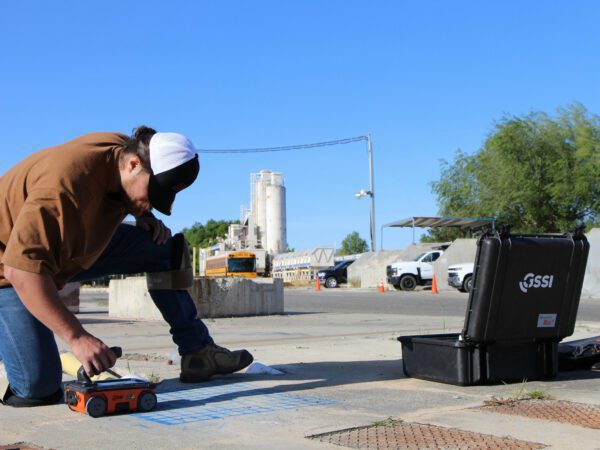Reveal the Transformative Power of Concrete Scanning in Optimizing Effectiveness and Safety And Security
Concrete scanning has become a critical device in the building sector, using unmatched benefits in enhancing task efficiency and making certain safety standards. By making use of sophisticated modern technology, concrete scanning enables professionals to see past the surface, uncovering covert complexities that can affect the architectural honesty of a structure. The transformative power of concrete scanning hinges on its capacity to provide detailed understandings and real-time data, transforming exactly how tasks are intended and performed. As we explore the intricacies of this ingenious method, a globe of opportunities opens, showcasing a new era of construction practices that prioritize precision and safety and security.
Value of Concrete Scanning
Making sure the architectural integrity and safety and security of building projects starts with the essential action of conducting complete concrete scanning. Concrete scanning is a non-destructive technique used to discover and map subsurface components within concrete frameworks.
Additionally, concrete scanning helps in optimizing task timelines and budget by avoiding unexpected costs and delays that might occur due to unanticipated obstructions within the concrete. Eventually, investing in comprehensive concrete scanning is a proactive approach that boosts both performance and safety and security in building projects.
Exactly How Concrete Scanning Works
Concrete scanning runs as a crucial tool in building and construction tasks by using sophisticated modern technologies to identify and map subsurface elements without triggering architectural damage. Ground Penetrating Radar (GPR) and Electromagnetic Induction (EMI) are 2 primary methods used in concrete scanning.
During the scanning process, the data collected is assessed in real-time, permitting immediate recognition of prospective hazards or obstacles under the surface area. This information aids in decision-making, ensuring that construction tasks proceed securely and successfully. Furthermore, 3D imaging software program can be used to develop comprehensive maps of the subsurface elements, additionally boosting project planning and implementation. By using these advanced technologies, concrete scanning significantly decreases the threat of expensive problems and injuries on building and construction websites.
Benefits of Concrete Scanning
Using sophisticated scanning innovations in building jobs supplies a plethora of benefits, boosting both effectiveness and security on-site. Among the main benefits of concrete scanning is the ability to find and find ingrained items such as rebar, post-tension cable televisions, and conduits accurately. By identifying these aspects prior to boring or cutting into concrete frameworks, the danger of unintended strikes is considerably decreased, preventing potential injuries to workers and damages to the framework itself. Furthermore, concrete scanning assists in planning and making better, as it provides precise information regarding the area and depth of architectural parts.

Study: Concrete Scanning Success

In one more instance, a construction firm utilized 3D concrete scanning to examine the condition of maturing concrete frameworks in a historical structure. The additional resources in-depth scans given important understandings right into the level of wear and tear and assisted focus on upkeep initiatives effectively. By proactively dealing with locations of problem identified with scanning, the business had the ability to extend the lifespan of the structure and make sure owner safety.
These situation researches emphasize the transformative power of concrete scanning in enhancing performance, precision, and safety in building and construction tasks.
Implementing Concrete Scanning in Projects
Executing sophisticated scanning innovations during building projects has become progressively crucial for boosting accuracy and web security. By integrating concrete scanning right into job preparation and implementation, building and construction groups can recognize prospective dangers, such as rebar or post-tension wires, concealed within concrete structures. This proactive approach decreases the threat of crashes, delays, and costly rework, ultimately bring about extra effective job timelines and budgets.
To implement concrete scanning properly, job managers should collaborate carefully with skilled scanning professionals to establish one of the most suitable scanning techniques for the details job requirements. Involving scanning professionals from the beginning of a project makes it possible for the team to create thorough scanning plans that address crucial areas of problem and make sure complete data collection.
In addition, integrating concrete scanning into routine project operations can improve decision-making procedures, as real-time scan information offers prompt insights right into the condition of concrete frameworks - Concrete Scanning. This data-driven strategy promotes educated analytical and makes it possible for teams to make adjustments quickly, cultivating a society of effectiveness and safety and security throughout the project lifecycle

Conclusion
Finally, concrete scanning plays an important role in improving performance and safety in construction projects. By using innovative innovation view it now to detect and map out underlying frameworks within concrete, this procedure assists to stop costly mistakes, guarantee architectural honesty, and decrease risks on site. With the capability to reveal surprise components and offer precise information, concrete scanning proves to be a useful device for optimizing job results and taking full advantage of overall success.
Concrete scanning is a non-destructive technique made use of to detect and map subsurface aspects within concrete frameworks. In addition, concrete scanning assists in optimizing job timelines and spending plan by staying clear of unforeseen prices and hold-ups that might occur due to unpredicted blockages within the concrete. One notable case research study involves a large-scale restoration task where concrete scanning played a crucial duty in guaranteeing project success.In another instance, a construction firm made use of 3D concrete scanning to examine the problem of maturing concrete structures in a historic structure. By integrating concrete scanning into job planning and implementation, building teams can identify possible hazards, such as rebar or post-tension cords, hidden within concrete structures.